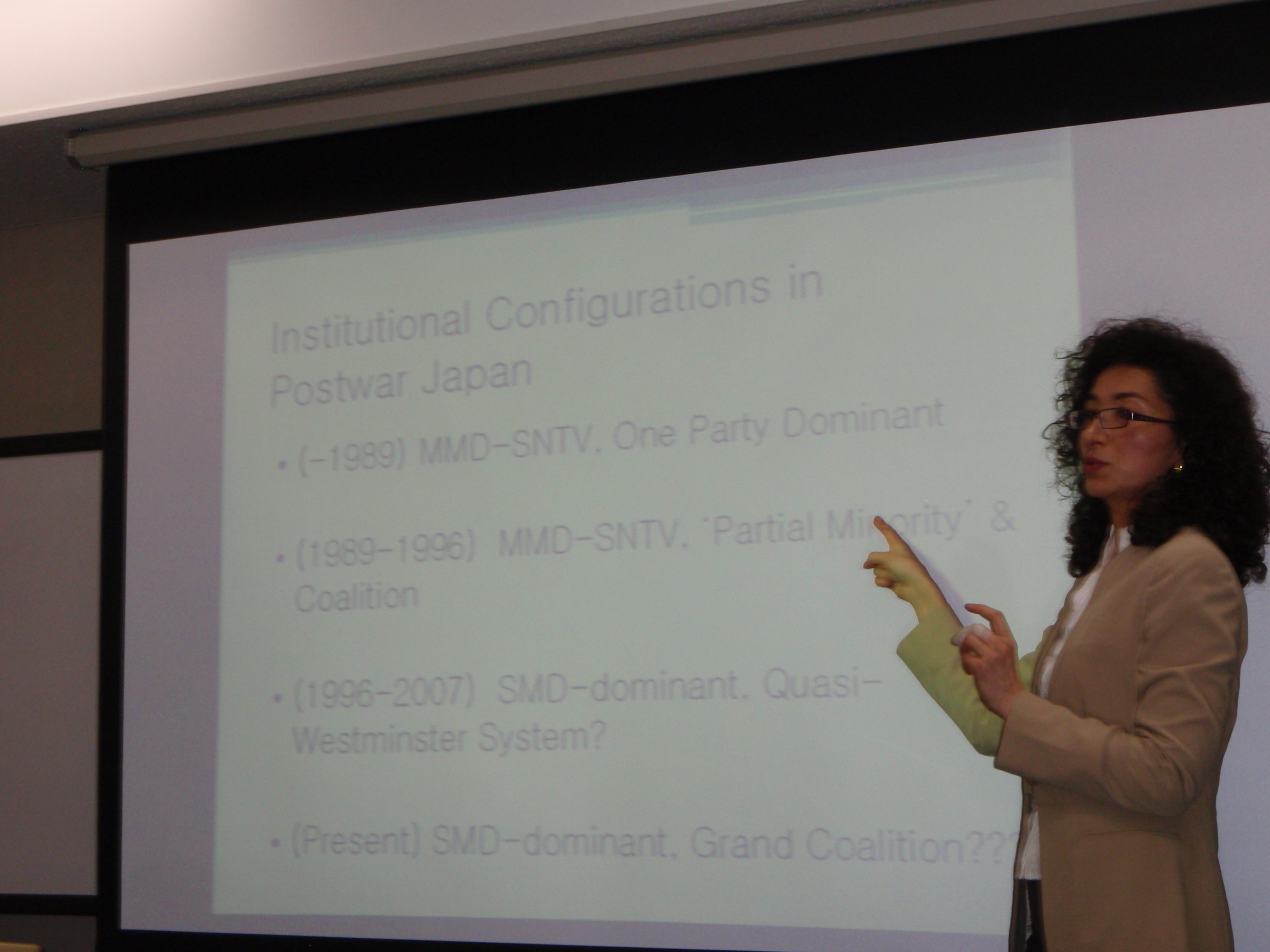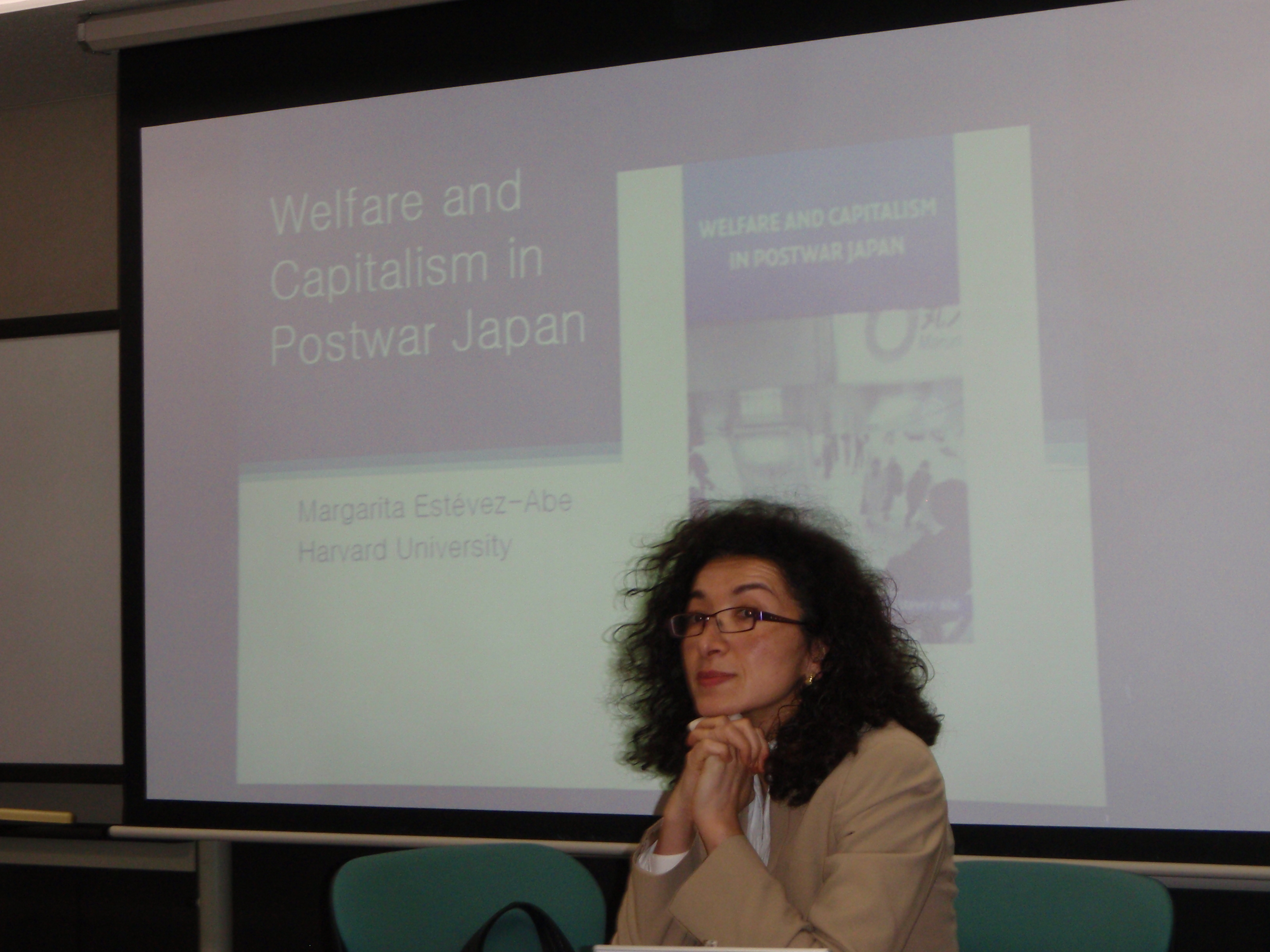第1回 社研GCOEセミナー
〈終了しました〉
日時:2008年11月27日(木曜日)19時~21時
場 所: 赤門総合研究棟5F 日本社会研究情報センター会議室
テーマ:「Welfare and Capitalism in Postwar Japan」
報 告:Margarita Estévez-Abe, Ph.D.
Paul Sack Associate Professor of Political Economy
Department of Government, Harvard University
コメンテーター:樋渡展洋教授 (東京大学社会科学研究所)
報告者略歴
ハーバード大学政治学部准教授。政治学博士(ハーバード大学)。慶応義塾大学総合政策学部助手、ミネソタ州立大学政治学部助教授を経て、現職。ドイツのコンスタンツ大学客員教授、ドイツ・ハンザ先端研究所、米ラッドクリフ先端研究所などで客員を務める。専門は、比較政治経済学。特に、女性の就業行動の先進国比較と日本の政治経済を中心。近著:Welfare and Capitalism in Postwar Japan(Cambridge University Press、2008)、“Japan’s New Extrovert Leaders: How Institutions Change Incentives and Capabilities,”Harvard Weatherhead Center of International Affairs Working Paper #3557 (2008), 共著, “How Policies Affect Women’s Economic Position within the Family: Labor Market Institutions and Wives’ Contribution to Household Income,” Luxembourg Income Study Working Paper (2008)、共著. 現在、Gendering the Varieties of Capitalismというタイトルの本を執筆中。
申し込み/問い合わせ:takamatsu@iss.u-tokyo.ac.jp (GCOEフェロー高松香奈)
※ 報告・質疑は日本語で行います
※ Margarita Estévez-Abe著「Welfare and Capitalism in Postwar Japan」を事前にお読みになりたい方は、セミナーお申し込みの際、その旨ご連絡をお願いいたします。
報告要旨
Existing studies of the Japanese welfare state call to mind Akutagawa’s Rashomon, a murder mystery where the major witnesses all disagree on the basic facts. Some scholars consider Japan to be like the US in its small social spending, while others consider it to be more like many European countries in its more coordinated form of capitalism. Why does Japan’s political economy look highly liberal from one angle, but more coordinated from another?
I introduce a concept of functional equivalents to explain how Japan's postwar welfare state relied upon various alternatives to orthodox social spending programs. When we take functional equivalents into consideration, we begin to see that Japan has offered more protection that its small social spending suggested. Japan, however, is not the only country that uses functional equivalents. I develop an institutional, rational-choice model of welfare politics to explain why different countries combine different types of orthodox social welfare programs and their functional equivalents. I particularly pay attention to politicians’ electoral incentives arising from: (i) electoral rules; (ii) the relative strength of political parties; and (iii) the number of veto players in the parliament. The new model of welfare politics helps situate Japan in a proper comparative context solving the aforementioned puzzle.
I also apply the institutional model to explain recent policy developments in the Japanese welfare state. After many decades of institutional stability, Japan embarked on a series of political institutional reforms since the mid-1990s. As a result, all the three institutional components of welfare politics began to change. I show that welfare politics indeed changed in Japan as a result.




